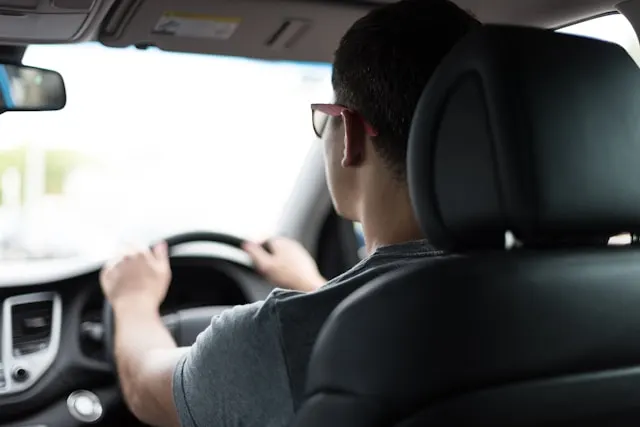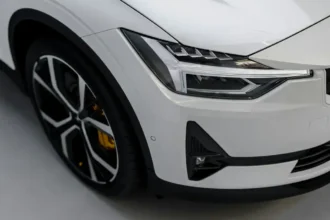If you’ve just gotten your driver’s license and are ready to hit the road, understanding how to take care of your car is essential. For new drivers, car maintenance can seem overwhelming at first, but with the right knowledge and habits, you can easily avoid costly repairs and keep your vehicle running smoothly. This guide covers the most important maintenance tasks every new driver should know to ensure their car stays in great shape, allowing you to drive with confidence and peace of mind.
Why Is Car Maintenance Important for New Drivers?
Owning a car is a big responsibility. Proper maintenance not only keeps your car running efficiently but also ensures your safety on the road. For new drivers, understanding these basics is key to avoiding breakdowns, accidents, and unexpected expenses. Regular maintenance prolongs your car’s life, increases its resale value, and saves you money in the long run.
Essential Car Maintenance Tips for New Drivers

1. Check Your Oil Regularly
Your engine’s oil is its lifeblood. It lubricates engine components, reduces friction, and helps prevent overheating. Regularly checking your oil level is one of the simplest yet most important car maintenance tasks.
- How to Check Oil: With the engine off and cool, use the dipstick to check the oil level. Ensure the oil is within the recommended range.
- When to Change Oil: Most cars need an oil change every 5,000-7,500 miles. However, consult your owner’s manual for your specific vehicle.
2. Monitor Tire Pressure
Tires are the only part of your car that touches the road, so keeping them in good condition is essential. Low tire pressure affects fuel efficiency and can lead to a blowout, while overinflation can cause uneven wear.
- Check Tire Pressure: Use a tire pressure gauge to check your tires monthly or before long trips. Compare the reading to the recommended pressure in your car’s manual.
- Rotation and Alignment: Rotate your tires every 6,000 miles and ensure they are properly aligned to avoid uneven wear.
3. Inspect Brakes Regularly
Your car’s braking system is crucial for your safety. Worn-out brakes can lead to dangerous situations, so it’s important to know the signs of brake wear.
- Listen for Squeaking or Grinding: If you hear a squeaking sound when braking, it’s a sign the brake pads need replacement.
- Check Brake Fluid: Low brake fluid levels can reduce your car’s stopping power. Check the brake fluid reservoir monthly and top off if necessary.
4. Replace Air Filters
Your car’s air filter prevents dirt and debris from entering the engine, allowing it to run efficiently. A clogged air filter can reduce your engine’s performance and fuel efficiency.
- How to Check: Open your car’s air filter housing, usually located near the engine. If the filter looks dirty or clogged, replace it.
- When to Replace: Typically, air filters should be replaced every 12,000-15,000 miles, but refer to your owner’s manual for guidance.
5. Keep an Eye on Fluids
Cars rely on a variety of fluids to function properly. As a new driver, you should familiarize yourself with these essential fluids and their maintenance schedules:
- Coolant: Prevents the engine from overheating. Check the coolant level regularly and top up as needed.
- Transmission Fluid: Essential for smooth gear changes. Transmission fluid should be checked during routine maintenance and changed according to the manufacturer’s guidelines.
- Power Steering Fluid: This makes steering your car easier. Low levels can cause difficulty steering and damage to the power steering system.
- Windshield Washer Fluid: While not directly related to your car’s performance, keeping this fluid topped off ensures you have clear visibility, especially in bad weather.
Creating a Routine Maintenance Schedule

To stay on top of car maintenance, it’s helpful to create a routine schedule. Here’s a general guide to get you started, but remember to consult your owner’s manual for your vehicle’s specific needs.
| Maintenance Task | Frequency |
|---|---|
| Check oil level | Monthly |
| Change oil | Every 5,000-7,500 miles |
| Check tire pressure | Monthly |
| Rotate tires | Every 6,000 miles |
| Check brakes | Every 6 months |
| Replace air filter | Every 12,000-15,000 miles |
| Check coolant | Every 6 months |
| Check transmission fluid | Every 30,000-60,000 miles |
FAQs for New Drivers
Q1: How often should I get my car serviced?
A: It’s recommended to get your car serviced at least once a year or every 12,000 miles. However, many vehicles have different needs, so always refer to your owner’s manual.
Q2: What should I do if the check engine light comes on?
A: Don’t panic! The check engine light can indicate many issues, from a loose gas cap to a serious engine problem. If it stays on, get your car diagnosed by a mechanic as soon as possible.
Q3: How can I improve fuel efficiency?
A: Keeping your tires properly inflated, changing your oil regularly, and reducing the weight in your car can all improve fuel efficiency.
Q4: How do I know when to change my tires?
A: A good rule of thumb is the penny test. Insert a penny into the tire tread with Lincoln’s head upside down. If you can see all of Lincoln’s head, your tire tread is too worn, and it’s time for new tires.
Q5: Can I change my car’s oil myself?
A: Yes, many new drivers can learn to change their car’s oil. You’ll need an oil filter wrench, a drain pan, and the correct type of oil for your vehicle. However, if you’re uncomfortable with this task, a professional mechanic can handle it for you.
Final Thoughts for New Drivers
Taking care of your car doesn’t have to be complicated. By following these car maintenance tips, you’ll not only extend the life of your vehicle but also become a more confident driver. Regular maintenance helps prevent breakdowns, increases safety, and saves you money on costly repairs down the road.
As a new driver, forming good maintenance habits early on will ensure that your car stays in excellent condition for years to come. So, the next time you head out for a drive, remember to check your oil, monitor your tire pressure, and stay on top of routine maintenance tasks to keep your car running smoothly.
By making these tips part of your driving routine, you’ll be well on your way to becoming a responsible, confident, and informed driver.








